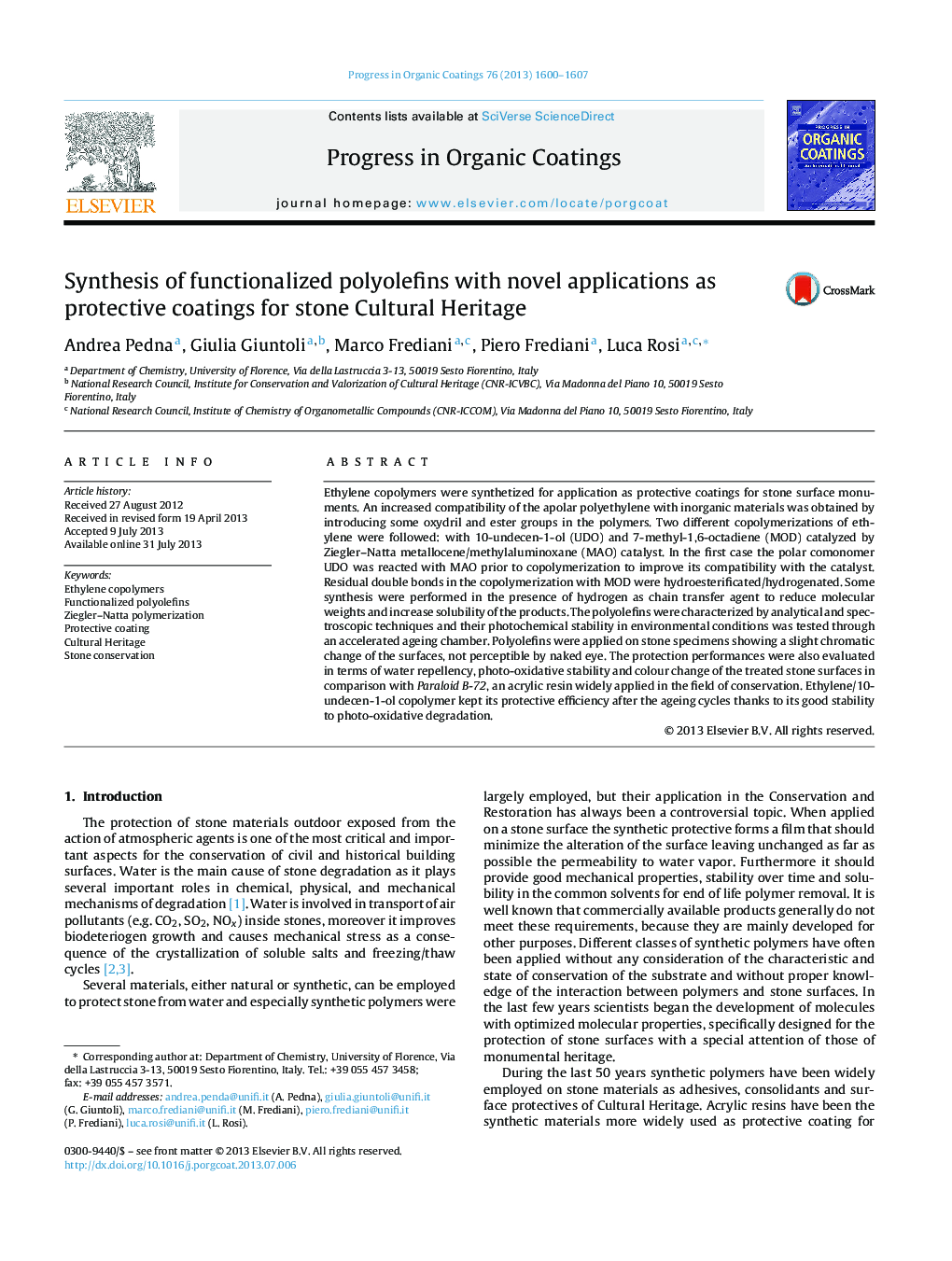| Article ID | Journal | Published Year | Pages | File Type |
|---|---|---|---|---|
| 10397989 | Progress in Organic Coatings | 2013 | 8 Pages |
Abstract
Ethylene copolymers were synthetized for application as protective coatings for stone surface monuments. An increased compatibility of the apolar polyethylene with inorganic materials was obtained by introducing some oxydril and ester groups in the polymers. Two different copolymerizations of ethylene were followed: with 10-undecen-1-ol (UDO) and 7-methyl-1,6-octadiene (MOD) catalyzed by Ziegler-Natta metallocene/methylaluminoxane (MAO) catalyst. In the first case the polar comonomer UDO was reacted with MAO prior to copolymerization to improve its compatibility with the catalyst. Residual double bonds in the copolymerization with MOD were hydroesterificated/hydrogenated. Some synthesis were performed in the presence of hydrogen as chain transfer agent to reduce molecular weights and increase solubility of the products. The polyolefins were characterized by analytical and spectroscopic techniques and their photochemical stability in environmental conditions was tested through an accelerated ageing chamber. Polyolefins were applied on stone specimens showing a slight chromatic change of the surfaces, not perceptible by naked eye. The protection performances were also evaluated in terms of water repellency, photo-oxidative stability and colour change of the treated stone surfaces in comparison with Paraloid B-72, an acrylic resin widely applied in the field of conservation. Ethylene/10-undecen-1-ol copolymer kept its protective efficiency after the ageing cycles thanks to its good stability to photo-oxidative degradation.
Keywords
Related Topics
Physical Sciences and Engineering
Chemical Engineering
Process Chemistry and Technology
Authors
Andrea Pedna, Giulia Giuntoli, Marco Frediani, Piero Frediani, Luca Rosi,
